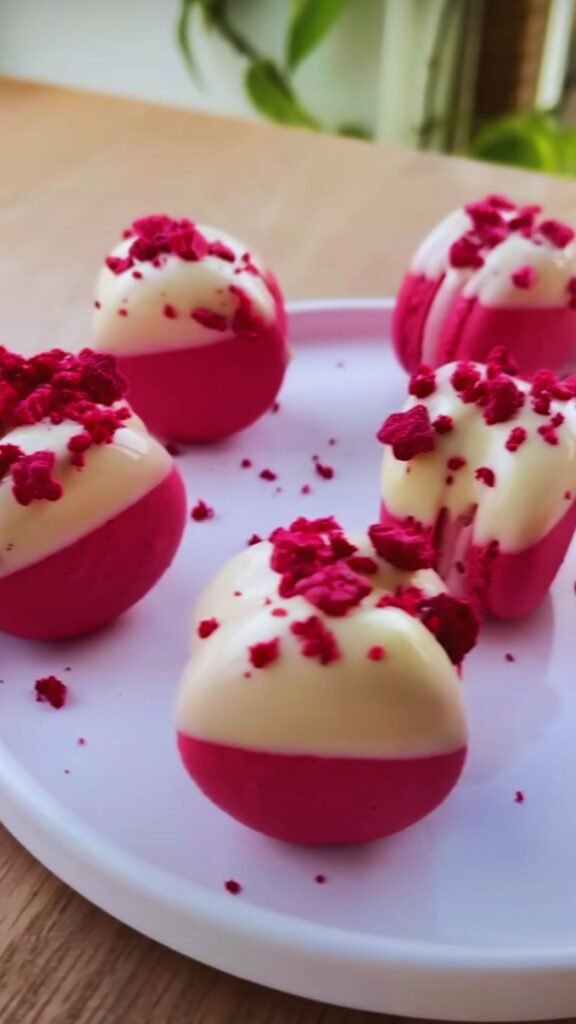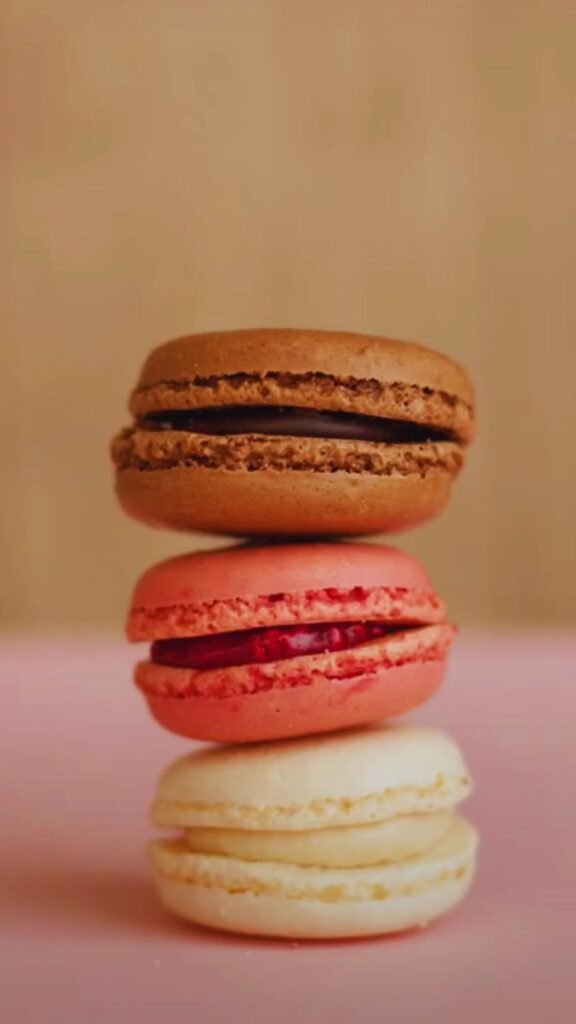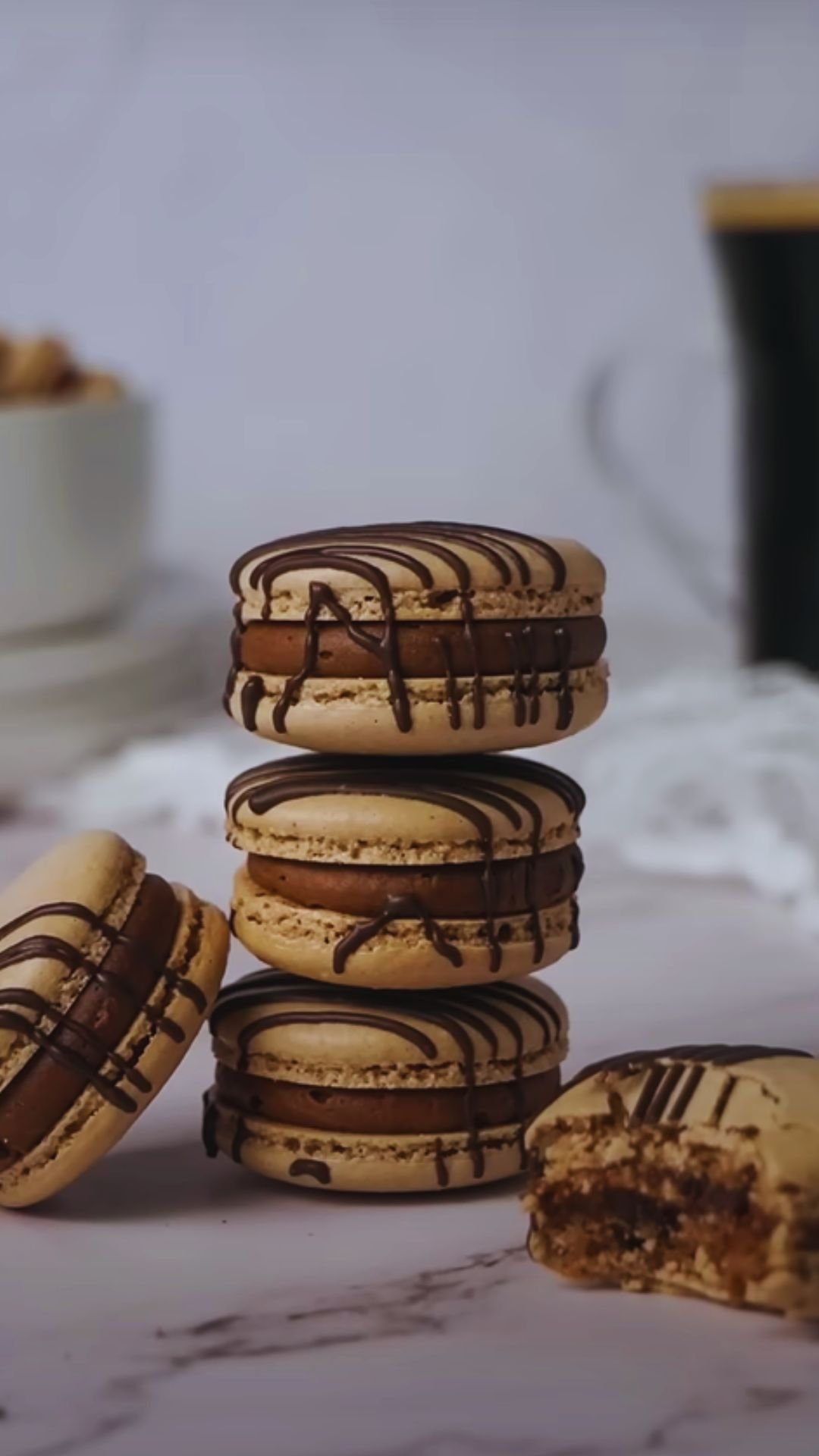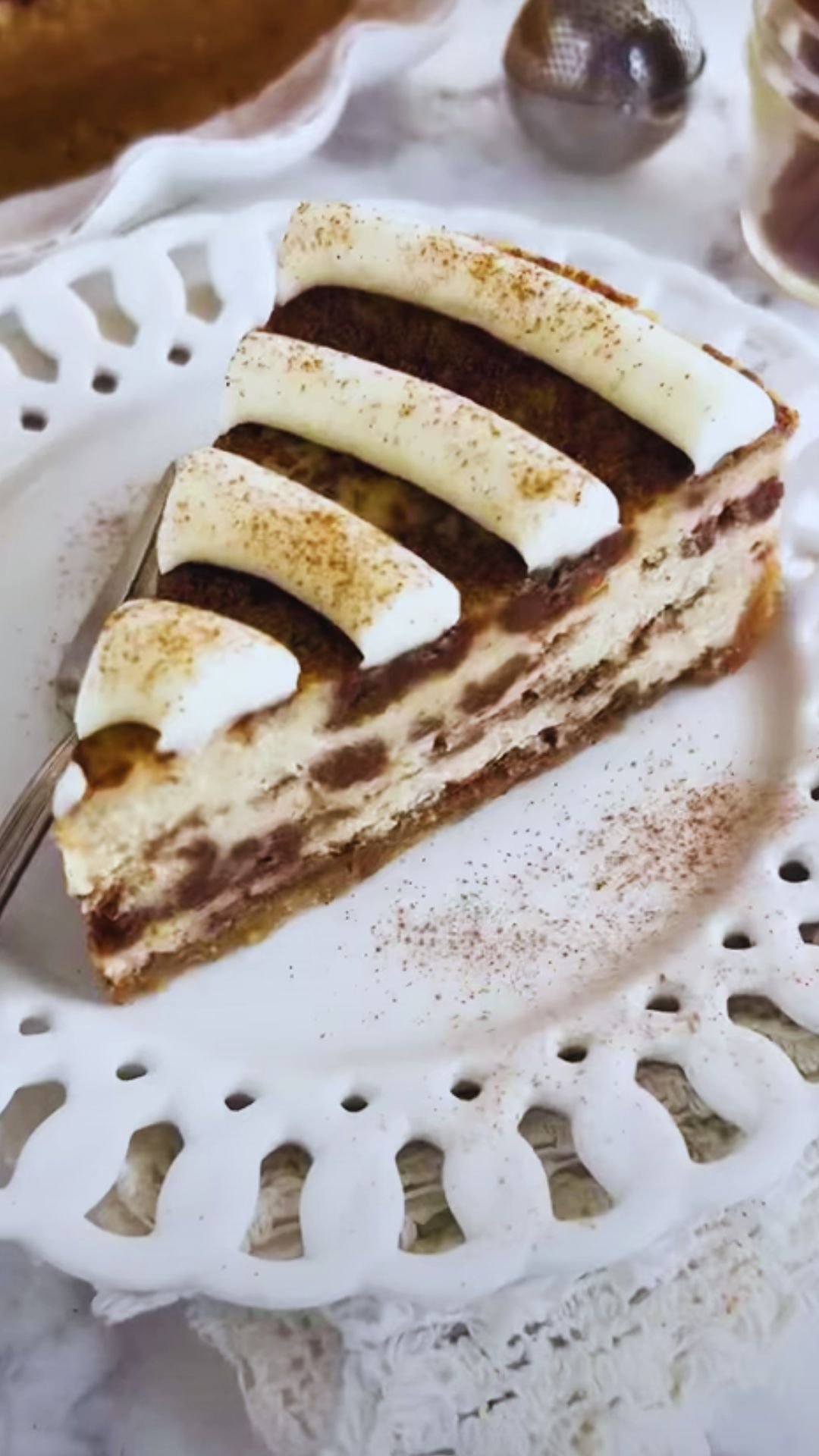Have you ever gazed longingly at those beautiful, colorful macarons in a pastry shop window? Those delicate, meringue-based confections with crisp shells and soft, flavorful fillings seem almost magical. I remember the first time I attempted to make macarons—it was a disaster! But after years of practice and countless batches (both successful and failed), I’ve mastered the techniques needed to create these elegant French treats at home.
In this comprehensive guide, I’ll walk you through everything you need to know about making perfect macarons. From essential ingredients and equipment to troubleshooting common problems, consider this your complete macaron masterclass.
What Are Macarons?
Before diving into the recipe, let’s clarify what authentic French macarons actually are:
Macarons : Delicate French sandwich cookies made with almond flour, egg whites, and sugar, featuring two meringue-based shells with a flavorful filling Macaroons : Coconut-based cookies that are completely different from French macarons Macrons : A political term, not a food item at all!
The perfect macaron has a smooth, domed top, ruffled “feet” (the frilly edge at the base), and a chewy interior. When you bite into one, you should experience a slight crunch followed by a soft, melt-in-your-mouth texture.
The Science Behind Perfect Macarons
Making macarons isn’t just baking—it’s a science. Several critical factors affect your success:
- Humidity: Low humidity is ideal for macaron making. High humidity can prevent proper skin formation and cause cracking.
- Ingredient temperature: Room temperature egg whites whip better than cold ones.
- Proper mixing technique: The macaronage (folding) process is crucial for proper consistency.
- Resting time: The drying period before baking forms a skin that helps create the classic “feet.”
- Accurate oven temperature: Even slight variations can cause failures.
Understanding these principles will help you troubleshoot when things go wrong—and they sometimes will, even for experienced bakers!
Essential Equipment
Before starting, gather these tools:
- Kitchen scale: Precision is crucial; volumetric measurements won’t cut it
- Food processor: For finely grinding almond flour and powdered sugar
- Stand mixer or hand mixer: For whipping egg whites
- Silicone spatula: For the critical folding technique
- Piping bags and round tips: For uniformly shaped macarons
- Baking sheets: Heavy-duty ones that won’t warp
- Silicone baking mats or parchment paper: Silicone mats produce more consistent results
- Oven thermometer: Most home ovens have inaccurate temperature readings
Ingredients for Basic Macaron Shells
For approximately 20-24 complete macarons (40-48 shells):
- 100g aged egg whites (about 3 large eggs), room temperature
- 100g granulated sugar
- 200g powdered sugar
- 110g almond flour (blanched)
- Pinch of salt
- Gel food coloring (optional)
Why Ingredient Quality Matters
- Almond flour: Must be fine and preferably blanched. Store-bought is convenient, but you can make your own by grinding blanched almonds.
- Powdered sugar: Contains cornstarch that helps stabilize the batter.
- Aged egg whites: Aging reduces moisture and strengthens protein bonds. Separate eggs 24-48 hours before and store covered in the refrigerator, then bring to room temperature before using.
- Granulated sugar: Finer sugars dissolve more easily in the meringue.
- Gel food coloring: Use gel or powder forms, as liquid can alter the batter consistency.
Detailed Step-by-Step Process
Step 1: Preparation
- Separate eggs 1-2 days in advance, cover with plastic wrap (poke a few holes), and refrigerate.
- Bring egg whites to room temperature 2 hours before baking.
- Prepare baking sheets with silicone mats or parchment paper.
- Prepare piping bags with round tips (I prefer a #12 round tip).
- Create a template with 1.5-inch circles spaced 2 inches apart if needed.
Step 2: Processing Dry Ingredients
- Process almond flour and powdered sugar in a food processor for 1-2 minutes.
- Sift the mixture at least twice to remove any large particles.
- Discard any large pieces that don’t pass through the sieve.
Step 3: Making the Meringue

- In a clean, dry bowl, begin whipping egg whites on low speed until foamy.
- Add a pinch of salt and increase to medium speed.
- Gradually add granulated sugar in three additions while continuing to whip.
- Increase to high speed and whip until stiff peaks form—the meringue should stand straight up when the beater is lifted.
- Add gel food coloring if desired and mix until just incorporated.
Step 4: The Macaronage (Folding Technique)
This is perhaps the most critical step:
- Add one-third of the dry mixture to the meringue and fold gently using a spatula.
- Continue adding the remaining dry ingredients in two more additions.
- Using the spatula, scrape around the bowl and then through the middle, rotating the bowl as you go.
- The proper consistency is reached when the batter flows like lava—when lifted with a spatula, it should fall in a ribbon and dissolve back into the rest of the batter within about 30 seconds.
- Test by lifting some batter with your spatula and trying to draw a figure 8. If you can complete the figure 8 without the batter breaking, it’s ready.
Step 5: Piping
- Transfer the batter to a piping bag fitted with a round tip.
- Hold the bag perpendicular to the baking sheet, about 1/4 inch above it.
- Pipe 1.5-inch rounds, applying consistent pressure.
- Once all shells are piped, firmly tap the baking sheet against the counter 3-4 times to release air bubbles.
- Use a toothpick to pop any visible air bubbles on the surface.
Step 6: Resting
- Let the piped macarons rest at room temperature until a skin forms.
- This typically takes 30-60 minutes, depending on humidity.
- The macarons are ready to bake when you can touch the surface lightly without batter sticking to your finger.
Step 7: Baking
- Preheat oven to 300°F (150°C).
- Bake one sheet at a time in the middle rack for 15-18 minutes.
- Test for doneness by gently trying to move the top of a macaron—if it’s still wobbly, bake for another minute.
- Let cool completely on the baking sheet before attempting to remove.
Step 8: Filling and Maturing
- Match similarly sized shells to create pairs.
- Pipe filling onto one shell of each pair, then sandwich with the matching shell.
- Refrigerate in an airtight container for 24 hours to “mature”—this allows flavors to meld and the texture to develop fully.
- Bring to room temperature for 20-30 minutes before serving.
Common Fillings for Macarons
| Filling Type | Base Ingredients | Flavor Variations | Stability | Best For |
|---|---|---|---|---|
| Buttercream | Butter, powdered sugar | Vanilla, chocolate, fruit, coffee, spices | High | Beginners, long shelf life |
| Swiss Meringue Buttercream | Egg whites, sugar, butter | Lighter texture, any flavor | Medium-High | Smooth texture lovers |
| Ganache | Heavy cream, chocolate | Dark, milk, white chocolate, infused with herbs/spices | Medium | Chocolate lovers |
| Jam/Curd | Fruit puree, sugar | Lemon, raspberry, passion fruit | Medium | Fruit-forward flavors |
| Cream Cheese | Cream cheese, powdered sugar | Vanilla, berries, citrus | Low | Immediate consumption |
Basic Vanilla Buttercream Recipe
For a simple starting point:
- 115g unsalted butter, softened
- 240g powdered sugar, sifted
- 1 tsp vanilla extract
- 1-2 tbsp heavy cream
- Beat butter until creamy and pale.
- Gradually add powdered sugar, beating until fully incorporated.
- Add vanilla extract and heavy cream to achieve desired consistency.
- Transfer to a piping bag for easy filling.
Rich Chocolate Ganache Recipe
- 120g dark chocolate (60-70% cocoa), finely chopped
- 120ml heavy cream
- 15g unsalted butter (optional, for shine)
- Heat cream until just simmering (do not boil).
- Pour over chocolate and let sit for 1 minute.
- Stir gently until completely smooth.
- Add butter if using and stir until incorporated.
- Let cool until thickened but still pipeable.
Classic Macaron Flavor Combinations
| Shell Color | Shell Flavor | Filling | Notes |
|---|---|---|---|
| White | Vanilla | Vanilla buttercream | Classic French style |
| Pink | Raspberry | White chocolate ganache with raspberry | Add freeze-dried raspberry powder to shells |
| Yellow | Lemon | Lemon curd | Add lemon zest to shells |
| Light brown | Coffee | Coffee buttercream | Add espresso powder to shells |
| Green | Pistachio | Pistachio buttercream | Add ground pistachios to shells |
| Purple | Lavender | Honey buttercream | Add culinary lavender to shells |
| Red | Red velvet | Cream cheese filling | Add cocoa powder to shells |
| Brown | Chocolate | Salted caramel | Add cocoa powder to shells |
Troubleshooting Guide

| Problem | Possible Causes | Solution |
|---|---|---|
| No feet | Insufficient resting time, too humid | Rest longer, use dehumidifier or air conditioning |
| Cracked shells | Oven temperature too high, air bubbles in batter | Lower temperature, tap baking sheets firmly |
| Hollow shells | Overwhipped meringue, improper macaronage | Whip to just stiff peaks, focus on proper folding |
| Uneven feet | Uneven oven heat, macaron template not level | Use oven thermometer, ensure level baking surface |
| Brown shells | Oven too hot | Reduce temperature, place empty baking sheet on rack above |
| Sticky bottoms | Underbaked | Increase baking time by 1-2 minutes |
| Wrinkled tops | Too much moisture, improper macaronage | Ensure proper consistency, avoid high humidity days |
| Pointy tops | Batter too thick, improper piping technique | Fold more, tap sheets harder, practice piping |
Storage and Shelf Life
- Unfilled shells: Store in airtight container at room temperature for up to 1 week.
- Filled macarons: Refrigerate in airtight container for 3-5 days.
- Freezing: Place in single layer, freeze until solid, then transfer to airtight container. Freeze for up to 3 months. Thaw in refrigerator overnight.
Advanced Tips for Macaron Masters
Once you’ve mastered the basics, try these techniques:
- French vs. Italian method: The recipe above uses the French method. The Italian method incorporates hot sugar syrup into egg whites for a more stable meringue.
- Infused flavors: Add tea leaves, ground spices, or zests to the dry ingredients for subtle flavors.
- Shell decorations: Sprinkle small amounts of cocoa nibs, freeze-dried fruit powder, or edible gold dust before baking.
- Multi-colored shells: Streak piping bags with gel coloring for ombré or striped effects.
- Double-filled macarons: Pipe a ring of buttercream and fill the center with jam or curd.
Serving Suggestions

- Arrange on a tiered stand for elegant presentations
- Serve with afternoon tea or coffee
- Pair with champagne for celebrations
- Create a dessert platter with fresh berries and chocolate truffles
- Gift in beautiful boxes tied with ribbon for special occasions
Frequently Asked Questions
What’s the difference between French and Italian macaron methods?
The French method (described in this article) involves directly whipping egg whites with sugar. The Italian method uses a hot sugar syrup poured into whipping egg whites, creating a more stable meringue. The Italian method is more forgiving but requires handling hot sugar syrup.
Why do my macarons have hollow shells?
Hollow shells usually result from overbeaten egg whites, improper macaronage, or baking at too high a temperature. Try whipping your eggs just until stiff peaks form, folding more carefully, and using an oven thermometer to verify temperature.
Can I make macarons on a rainy day?
It’s challenging but possible. Use a dehumidifier in your kitchen, extend the resting time, and possibly increase the baking time by a minute or two. Some bakers turn on their air conditioning to reduce humidity.
How far in advance can I make macarons for an event?
You can make the shells up to a week ahead and store them unfilled in an airtight container. Assemble and fill 24-48 hours before the event for optimal texture and flavor development.
My macarons stick to the baking paper. What am I doing wrong?
Likely underbaking. Increase your baking time by 1-2 minutes. Also, let macarons cool completely before attempting to remove them. If still struggling, lightly mist water under the parchment paper while still hot—the steam will help release them.
Can I make macarons without almond flour?
Yes, other nut flours like hazelnut or pistachio work well. For nut allergies, some bakers use pumpkin seed flour, but the texture and flavor will differ from traditional macarons.
Why do I need to age egg whites?
Aging reduces moisture content and strengthens protein bonds, resulting in a more stable meringue. If short on time, microwave room temperature egg whites for 10 seconds and stir—this mimics some effects of aging.
My macarons have no feet. What happened?
No feet usually indicates insufficient resting time before baking. Make sure a skin has formed—you should be able to touch the shells without batter sticking to your finger. Also check that your oven temperature is accurate.
Embracing the Journey
Remember, mastering macarons is a journey. I didn’t create perfect macarons on my first, second, or even fifth attempt! With each batch, you’ll learn something new about your ingredients, equipment, and technique. Don’t be discouraged by initial failures—they’re part of the process.
Keep notes on your baking conditions, including room temperature, humidity, and any modifications you make. This record will help you refine your technique over time.
The satisfaction of pulling a perfect batch of macarons from the oven—with smooth tops, frilly feet, and vibrant colors—is worth every failed attempt along the way. And once you’ve mastered the basic technique, the flavor possibilities are endless!
So gather your ingredients, prepare your workspace, and embark on your macaron adventure. With patience, precision, and persistence, you’ll soon be creating these elegant French confections with confidence and pride.


